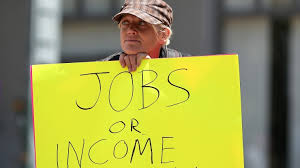Cutting Unemployment Benefits Created Jobs
< < Go Back
Unemployment benefits lasted 26 weeks in most states prior to the Great Recession. But in response to the financial crisis in 2008, the federal government extended unemployment benefits, and by the end of 2013, the average unemployment benefit duration across the states was 53 weeks.
Congress chose not to reauthorize the program in December 2013. At that point, extended benefits were halted, with average unemployment benefits dropping from 53 weeks to 25 weeks.
A new paper from the National Bureau of Economic Research by researchers Marcus Hagedorn, Iourii Manovskii and Kurt Mitman identifies what happened to state employment rates when extended benefits were halted. They found:
– Cutting the extra benefits created 1.8 million new jobs in 2014.
– One million of those jobs were filled by workers who were not participating in the labor force and who would not have participated in the labor market had the extended benefits program continued.
– Cutting benefits was responsible for 61 percent of aggregate employment growth in 2014.
– 2014, the first year without the extended benefits, had employment growth that was 25 percent higher than in the best preceding years.
Why the positive impact on employment? Unemployment benefits can create disincentives to work. Consider a 2014 Harris Poll of 1,500 unemployed Americans: 82 percent of respondents said they would search “harder and wider” for a job if their unemployment compensation ran out. Almost half reported not having had to look for work as hard because of the benefits.
More From NCPA:




